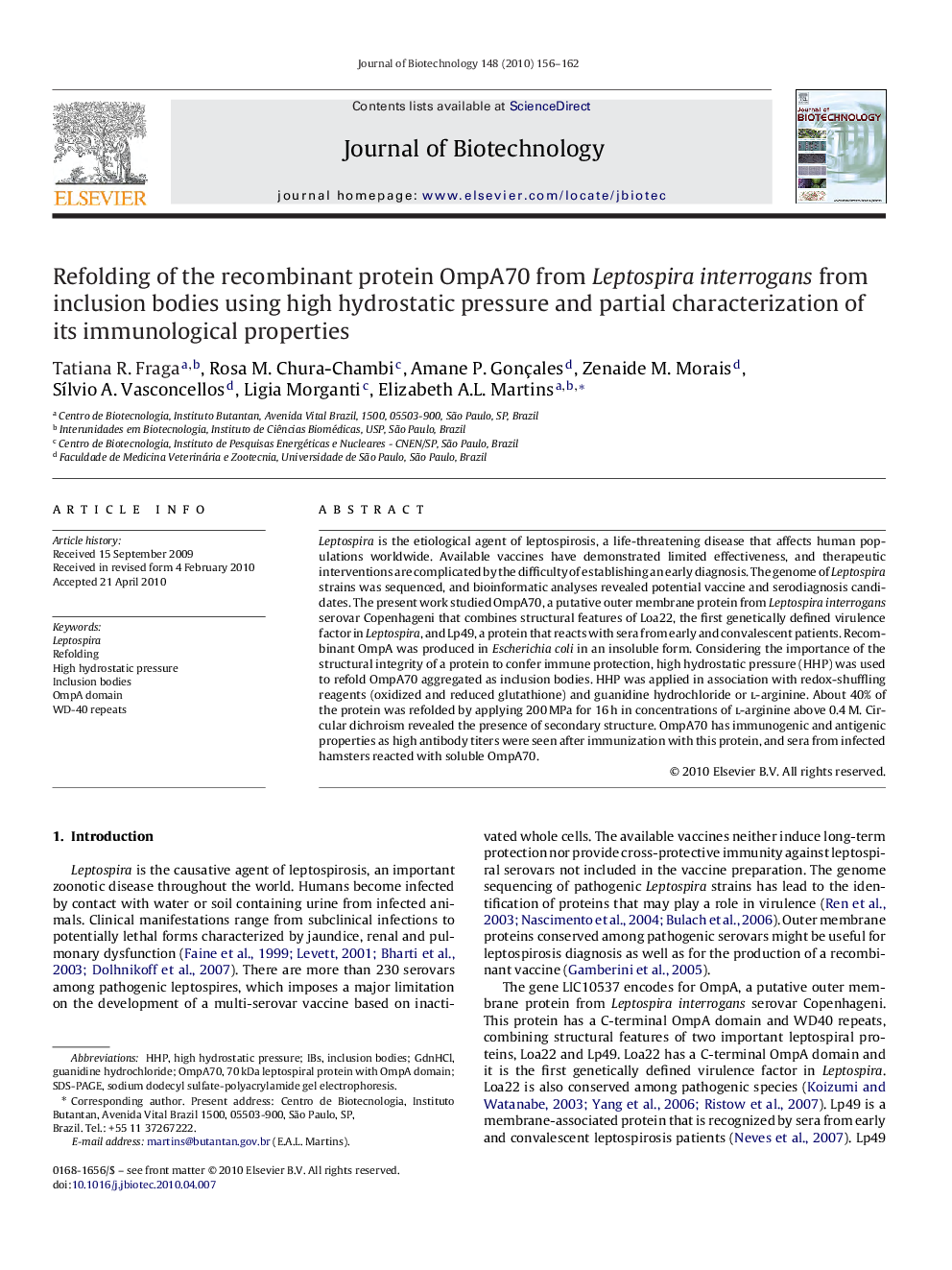| Article ID | Journal | Published Year | Pages | File Type |
|---|---|---|---|---|
| 24095 | Journal of Biotechnology | 2010 | 7 Pages |
Leptospira is the etiological agent of leptospirosis, a life-threatening disease that affects human populations worldwide. Available vaccines have demonstrated limited effectiveness, and therapeutic interventions are complicated by the difficulty of establishing an early diagnosis. The genome of Leptospira strains was sequenced, and bioinformatic analyses revealed potential vaccine and serodiagnosis candidates. The present work studied OmpA70, a putative outer membrane protein from Leptospira interrogans serovar Copenhageni that combines structural features of Loa22, the first genetically defined virulence factor in Leptospira, and Lp49, a protein that reacts with sera from early and convalescent patients. Recombinant OmpA was produced in Escherichia coli in an insoluble form. Considering the importance of the structural integrity of a protein to confer immune protection, high hydrostatic pressure (HHP) was used to refold OmpA70 aggregated as inclusion bodies. HHP was applied in association with redox-shuffling reagents (oxidized and reduced glutathione) and guanidine hydrochloride or l-arginine. About 40% of the protein was refolded by applying 200 MPa for 16 h in concentrations of l-arginine above 0.4 M. Circular dichroism revealed the presence of secondary structure. OmpA70 has immunogenic and antigenic properties as high antibody titers were seen after immunization with this protein, and sera from infected hamsters reacted with soluble OmpA70.
